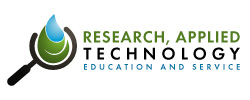Table of Contents
Background
Current Project Status
- 1st Sampling Campaign (2/21/2024)
- 1st Monthly Site Visit (2/20/2024)
- 2nd Monthly Site Visit (3/12/2024)
- 3rd Monthly Site Visit (4/17/2024)
- 2nd Sampling Campaign (5/14/2024)
- 4th Monthly Site Visit (5/14/2024)
- 5th Monthly Site Visit (6/13/2024)
- 6th Monthly Site Visit (7/18/2024)
- 3rd Sampling Campaign (8/14/2024)
- 7th Monthly Site Visit (8/14/2024)
- 8th Monthly Site Visit (9/17/2024)
- 9th Monthly Site Visit (10/18/2024)
- 4th Sampling Campaign (11/18/2024)
- 10th Monthly Site Visit (11/16/2024)
- 11th Monthly Site Visit (12/16/2024)
- 12th Monthly Site Visit (1/17/2025)
- 13th Monthly Site Visit (2/20/2025)
- 5th Sampling Campaign (3/5/2025)
- 14th Monthly Site Visit (3/20/2025)
- 15th Monthly Site Visit (4/17/2025)
- 6th Sampling Campaign (5/13/2025)
- 16th Monthly Site Visit (5/15/2025)
- 17th Monthly Site Visit (06/25/2025)
- 18th Monthly Site Visit ( 7/17/2025)
Phase 1- Watershed Characterization
The objective of this study is to perform a watershed characterization to determine the potential pollution sources of each watershed. The watershed characterization was achieved by developing a cyber infrastructure, and it collects a wide inventory of data to identify which one of the three waterways has a major contribution to the LLM.
Cyberinfrastructure development using the Geographic Information System (GIS) database helped to comprehend the major characteristics of each area contributing to the watershed supported by the analysis of the data collected. The watershed characterization process started with delineating the boundaries of each watershed. Then, geospatial and non-geospatial data were added to the cyberinfrastructure from numerous sources including point and nonpoint sources of pollution. Results showed that HWMD and IBWCNF watersheds were found to have a higher contribution to the water impairments to the LLM. HWMD and IBWCNF comprise the potential major sources of water quality impairments such as cultivated crops, urbanized areas, on-site sewage facilities, colonias, and wastewater effluents.
The Texas Commission provided funding for this project on Environmental Quality through the 319 Clean Water Act Program.
This report goes into depth on our discovery methods and our water characterization.
Texas Commission on Environmental Quality Characterization of Northern and Central Lower Rio Grande Valley (LRGV) Watersheds Project Deliverable ID Final Report
Phase 2- Watershed Characterization
Project Scope
- Extend Phase I Lower Rio Grande Valley-North and Central Watershed Characterization (UTRGV).
- Provide a combination of continuous and event-based monitoring (modeled after LLM-BSC WPP)
- RTHS- stream monitoring: Leverages 3 monitoring stations commissioned by TWDB-FWF
- Raymondville Drain
- Hidalgo-Willacy Main Drain
- USIBWC North Floodway
- Quarterly- water quality and hydrodynamic measurements
- DO, Water Temp, Conductivity, pH, Nitrate/Nitrite, Total Phosphorus, TKN, and E. coli
- ADCP discharge transects and flow measurements to develop discharge rating curves as a function of stage height
- Continuous
- Water quality
- Stream stage height
Continuous water quality data provided through this project will augment conventional routine quarterly water quality sampling programs. The availability of high-resolution time series data will: address measurement bias that characterize routine measurements; and help characterize the water quality dynamics in response to episodic events (e.g., spills, extreme weather).
Phase II contract is for 18 months of monitoring. QAPP approved August 23rd, 2024. Project durations: 24-36 months.
Project Updates
Phase 1- Partial Watershed Protection Plan (WPP) Development
Project Updates
- Team working on QAPP Amendment to include SWQMIS IDs for new monitoring stations.
